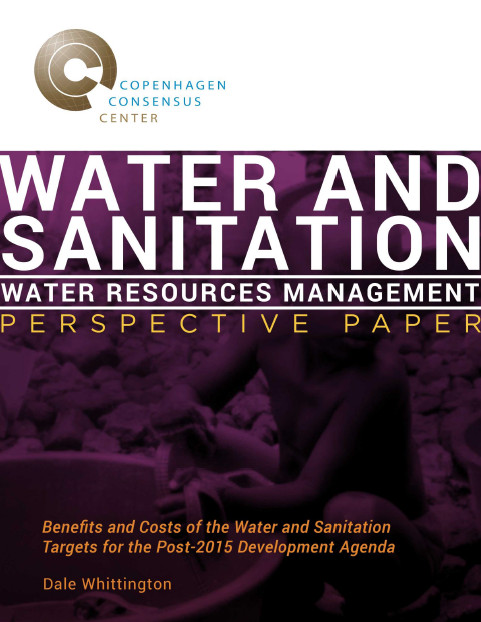Post-2015 Consensus: Water Resource Management Perspective
 |
Benefits and Costs of the Water, Sanitation and Hygiene Targets for the Post-2015 Development Agenda Post-2015 Consensus
Benefits and Costs of the Water, Sanitation and Hygiene Targets for the Post-2015 Development Agenda Post-2015 Consensus
rapport Jan 2015 ; 21 pages
Aut. Dale Whittington
Ed. Copenhagen Consensus Center - Lowell
Téléchargeable sous format: PdF
Téléchargeable chez l'éditeur
Page de présentation d'un éditeur
Abstract:
To summarize, I have made two broad arguments in this paper. First, global average benefit-cost ratios for large-scale water resource management investments are not useful because investments must be analyzed at the local level. It does not make sense to discuss the costs and benefits of large-scale infrastructure such as multipurpose dams as an abstract category of policy intervention. Some dams are economically attractive and others are not. The average benefit-cost ratio of a global set of possible dams is not of interest because it is not necessary to invest in them all. One must be specific about the timing, sequencing, and location of large-scale infrastructure investments. The same is, in fact, true of health and social policy interventions, but cost-benefit analysts in these sectors are less reluctant to present global averages of benefit-cost ratios to advance their case for more sector funding.
Second, the sectoral comparison between infrastructure projects and targeted health and social interventions is misleading for a number of reasons discussed. I believe it would be a tragic mistake for low-income countries to prioritize targeted health interventions at the expense of large-scale infrastructure based on the analyses underpinning the Copenhagen Consensus rankings.
This discussion raises the question of what can be done to improve the Copenhagen Consensus Project’s approach. I have two suggestions. First, sector specialists should be asked to provide more evidence from ex-post cost-benefit analyses to support the findings from their ex-ante studies.
The second is to divide sector policy proposals into short and long-range interventions, using some necessarily arbitrary threshold (e.g. 10 years) that would separate large-scale infrastructure projects from the “simple” delivery of health and social services. The Nobel Panel could rank proposals in each category separately. Then the Nobel Panel could try to reconcile the ranking in the two categories, perhaps by making a judgment as to what fraction of the total funding should be allocated to each of the two categories. This would require careful deliberation of the differences inherent in these two types of interventions.
Mot clef: |
Editeur/Diffuseur: |
|
Copenhagen Consensus Center - Lowell - Etats Unis |
En cas de lien brisé, nous le mentionner à communication@pseau.org